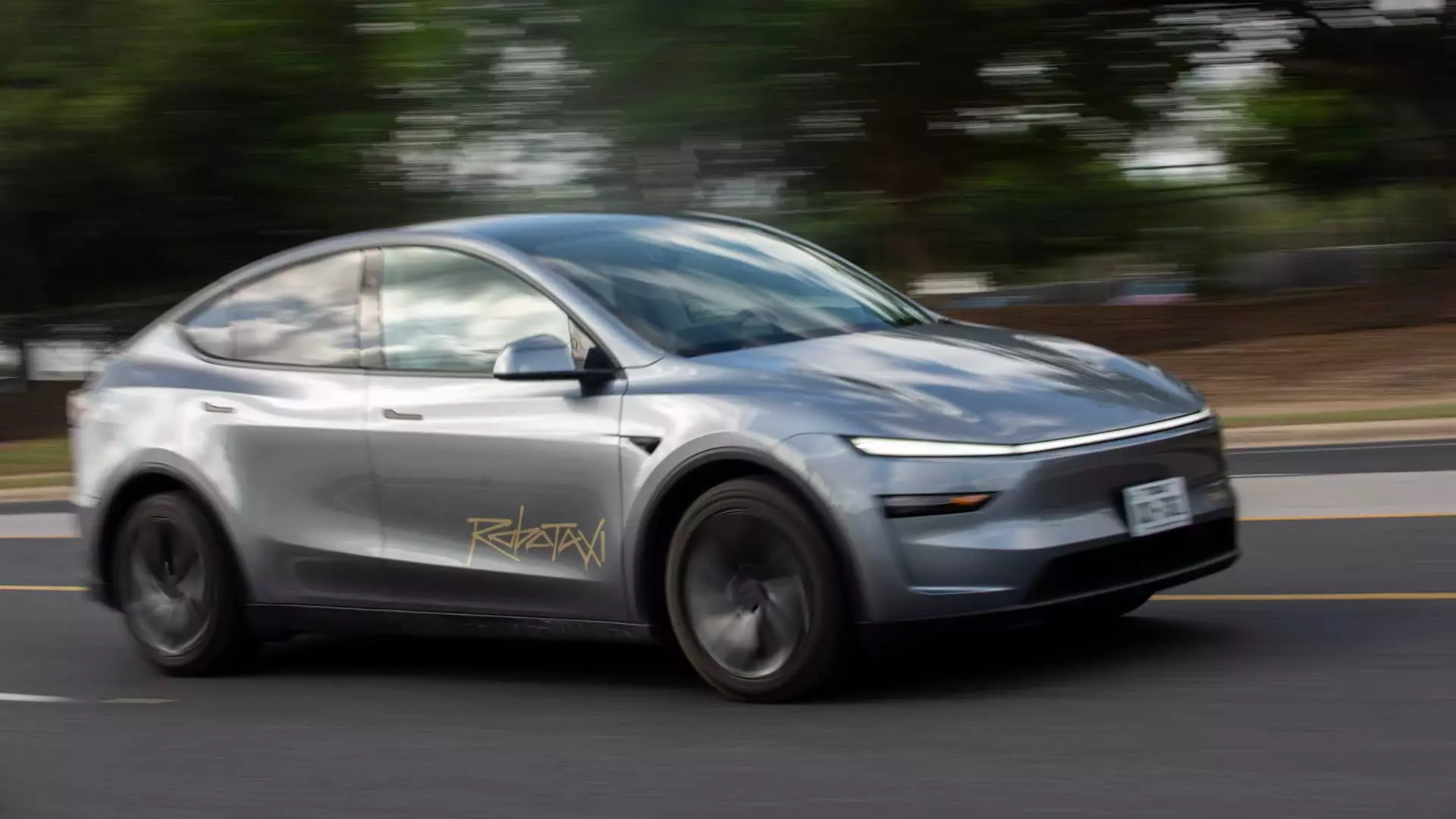Tesla’s attempts to revolutionize urban transportation with its robotaxi initiative showcase both audacity and a reckless disregard for current regulatory frameworks. Under Elon Musk’s leadership, Tesla has consistently aimed to push boundaries — promising a future where autonomous vehicles are not just driver-assist tools but fully driverless ride-hailing services. Yet, reality insists on a different pace. The recent statements from Tesla about expanding robotaxi services into the San Francisco Bay Area epitomize this tension between technological aspiration and regulatory compliance. Without the proper permits or approvals, Tesla’s pushes into these markets are not only premature but also legally questionable.
While Musk hints at a future where Tesla’s AI-driven fleets roam freely, California’s regulatory authorities have made clear that the current legal landscape prevents such operations. They specify that Tesla vehicles cannot carry passengers on public roads with autonomous features activated without a human driver present and alert. The state’s position emphasizes safety and oversight, sitting at odds with Tesla’s promotional narratives that often suggest a fully autonomous future. This disconnect underscores the fundamental challenge Tesla faces: convincing regulators—and ultimately consumers—that its vehicles are safe and reliable sources of transportation without human intervention.
Despite Tesla’s bold claims, the regulatory environment in California remains firmly rooted in traditional safety protocols. The use of permits such as the charter-party carrier license signifies that Tesla’s current activities are limited to private, human-driven services. The company’s plan to extend operations to friends, family, and select members of the public under this permit appears to be a strategic even if limited step, but it falls far short of Tesla’s envisioned driverless fleet. Tesla’s ongoing struggle to move from testing to full deployment illustrates the broader issue all autonomous vehicle developers face: balancing innovation with safety and legal accountability.
Regulatory Roadblocks and the Party’s Rules of Engagement
Tesla’s ambitions are further hindered by the nuanced complexities of Californian autonomous vehicle regulation. The state’s DMV has, since 2014, issued Tesla a drivered testing permit. This allows the company to operate autonomous vehicles with safety drivers—typically Tesla employees or contractors—present, but prohibits Tesla from charging for autonomous rides. Such stipulations cast a shadow over Tesla’s plans for rapid expansion, effectively constraining its ability to commercialize fully driverless services.
In practice, this regulatory position poses a significant obstacle for Tesla’s business model. The company’s vision of widespread robotaxi fleets releasing on the streets is constrained by these legal boundaries. Critics argue that Tesla’s promotion of “Full Self-Driving” (FSD) and Autopilot has been somewhat misleading, often suggesting vehicles can operate autonomously without human oversight. California authorities have taken the stance that Tesla’s marketing may overstate the current capabilities of its systems, risking consumer safety and undermining trust in autonomous technology.
The divergence between Tesla’s internal aspirations and the regulatory realities creates an environment filled with friction. While Tesla can perform limited testing and perhaps even offer paid rides with safety drivers, the leap to a fully autonomous, driverless service remains blocked by regulatory barriers. The path to acceptance in California thus involves not just technological breakthroughs, but significant regulatory negotiation and transparency. Failing to clarify operational plans to local officials fuels suspicion and resistance, hampering Tesla’s ambitions in the region.
Competitors, Community Concerns, and the Future Outlook
Tesla is not operating in a vacuum. Its closest competitor, Waymo, has successfully navigated California’s regulatory landscape, securing permits that allow driverless ride-hailing services and charging fees for autonomous trips. This indicates that regulatory agencies are willing to accept progress—albeit at a cautious pace—so long as safety and oversight are maintained. Waymo’s strategic approach includes extensive permits and transparent communication with local governments, enabling smoother deployment and public acceptance.
In contrast, Tesla’s lack of communication has fostered skepticism among community leaders and residents. Officials in Marin County and other parts of the Bay Area have expressed frustration over what they perceive as a lack of transparency from Tesla regarding its plans. Such mistrust can significantly hinder deployment, as local communities are increasingly vocal about concerns over safety, privacy, and the societal implications of autonomous vehicles.
Furthermore, the regulatory standoff reveals a broader dilemma: the dissonance between technological innovation and societal readiness. While Musk champions a high-tech utopia where cars drive themselves seamlessly, the legal framework demands cautious, incremental steps. Tesla’s current approach risks alienating regulators and the public alike by overpromising and underdelivering on safety assurances. To truly harness the potential of autonomous vehicles, Tesla must not only accelerate its technological development but also foster open dialogue with policymakers and communities.
In the grand scheme, Tesla’s autonomous ambitions appear to be both a technological challenge and a political one. While the company’s visions are ambitious and compelling, the regulatory landscape may slow progress more than any technical hurdle. The future of Tesla’s robotaxi dream hinges on its ability to adapt, communicate, and build trust—elements that are just as important as the hardware and algorithms that power these vehicles. As the industry moves forward, companies that can integrate innovative technology with responsible regulation and community engagement will likely emerge as true leaders in autonomous mobility.


Leave a Reply